Detailed Overview of Power And Politics Exercises
The chapter Power and Politics highlights key issues of gender and race within feminist discourse, and the Power and Politics exercises help students analyze these themes critically. Based on Audre Lorde’s reflections, the chapter reveals tensions between white feminist narratives and the lived experiences of Black women, particularly through her critique of Mary’s book Gyn/Ecology, which excludes Black cultural representation. The exercises guide learners to explore inclusion, marginalization, and intersectionality through comprehension, critical thinking, vocabulary, grammar, and writing tasks. By encouraging reflection on social systems and personal beliefs, the Power and Politics exercises deepen students’ understanding of power, identity, and feminist struggles.
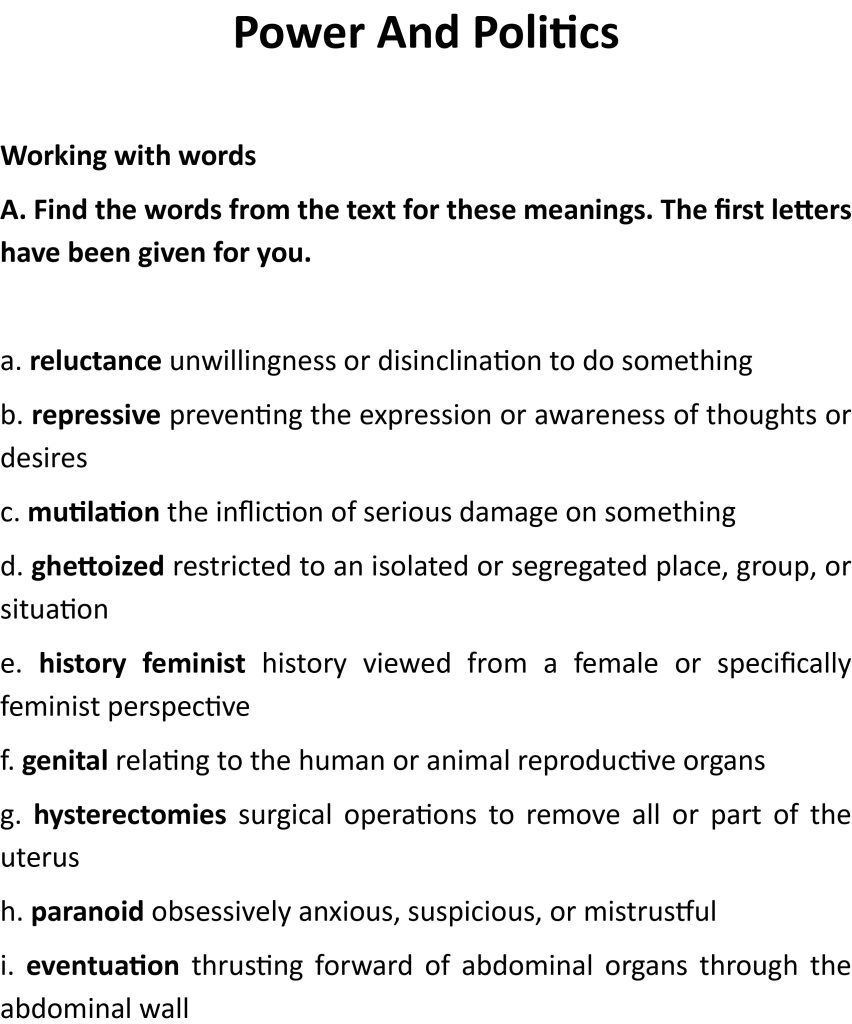
| Verb | Noun | Adjective |
|---|---|---|
| commit | commitment | committed |
| nurture | nurturance | nurturable |
| legitimatee | legitimization | legitimize |
| oppress | oppression | oppressive |
| defense | defensiveness | defensive |
| victimize | victimization | victimized |
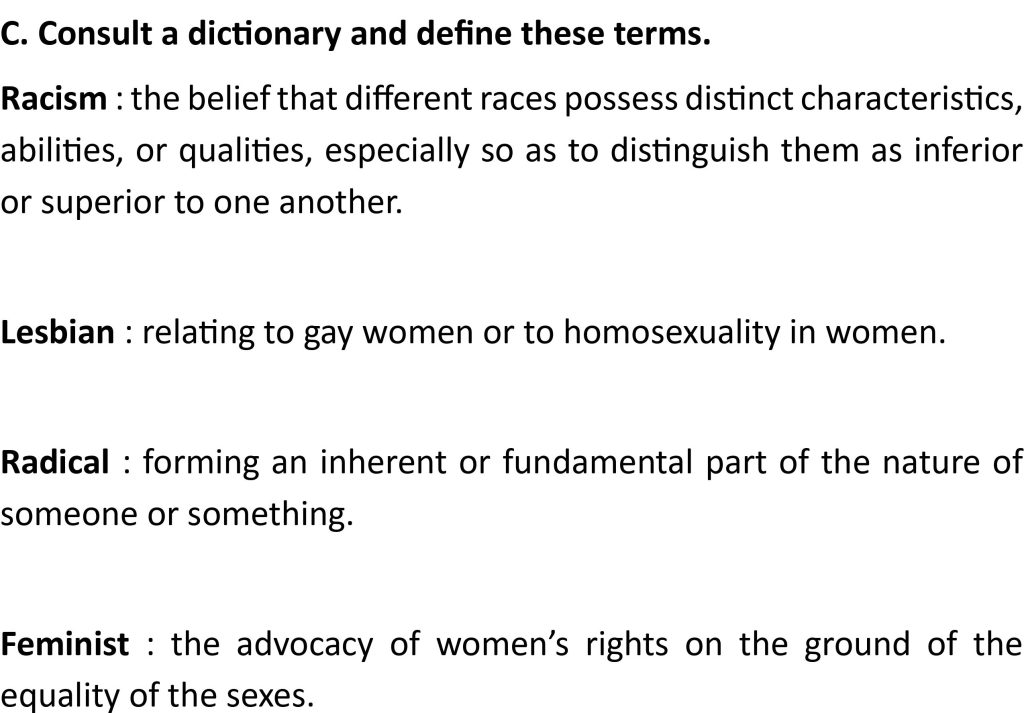
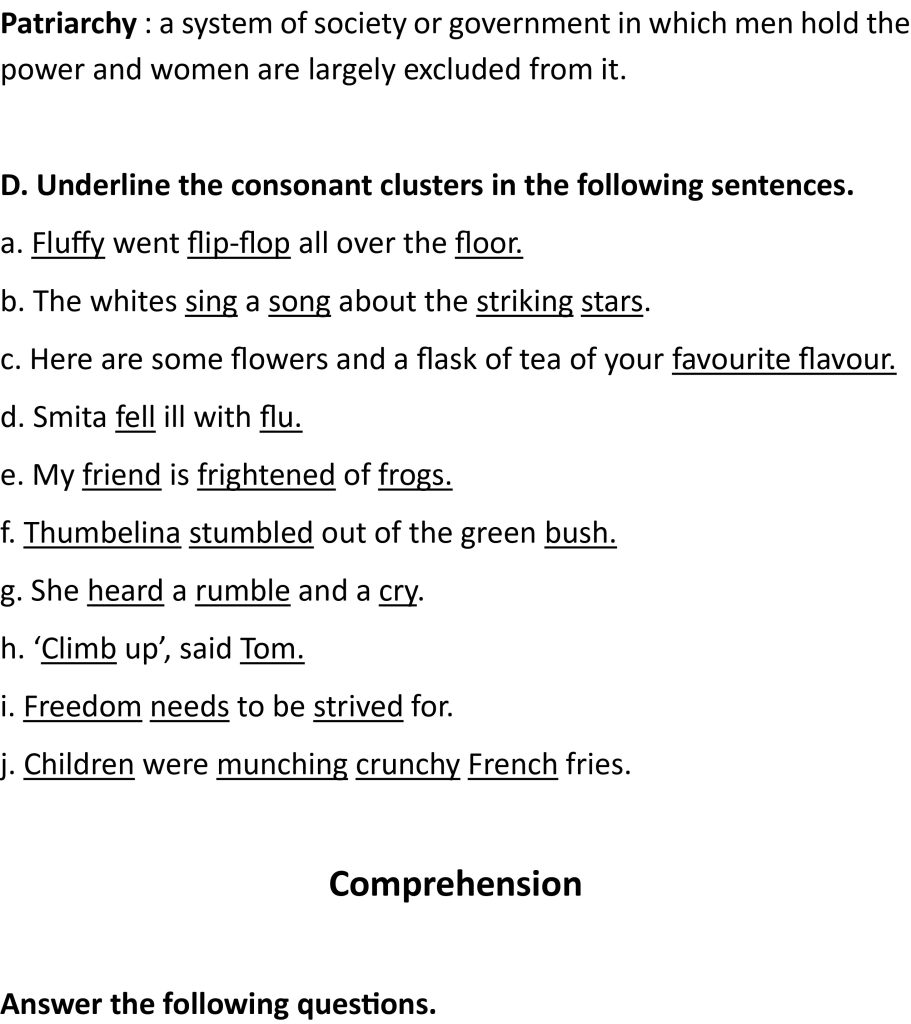
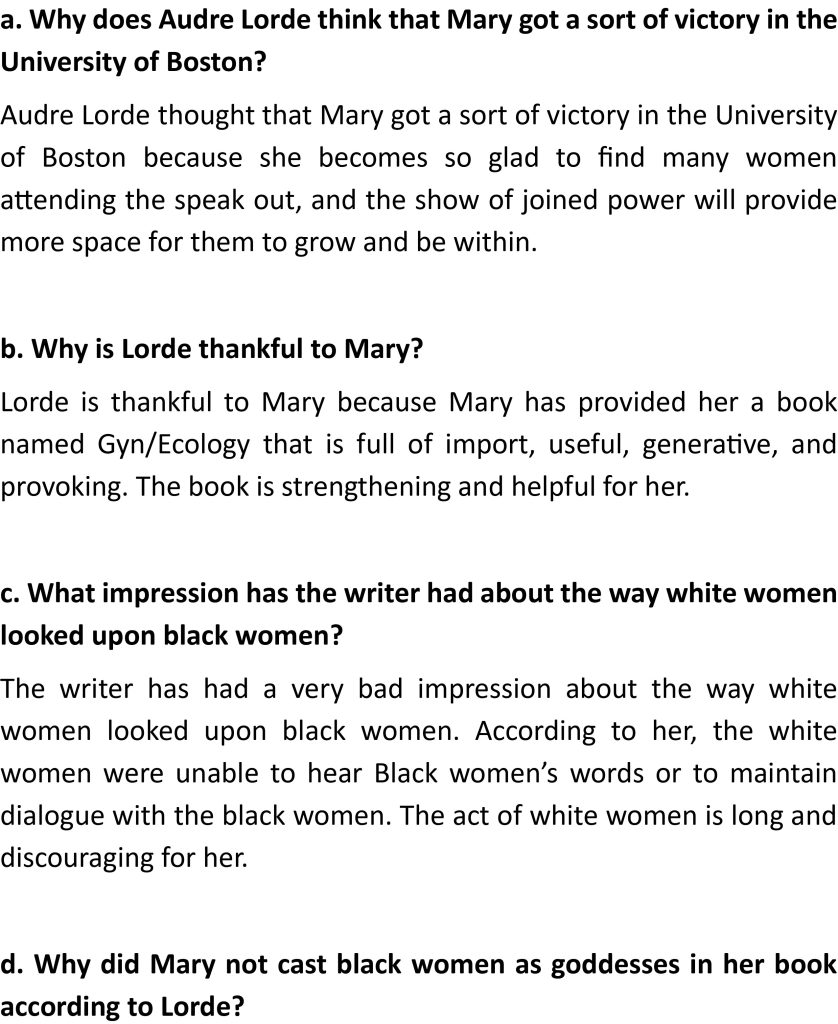
Continue reading the ‘Power And Politics Full Exercises’ in meroguru app

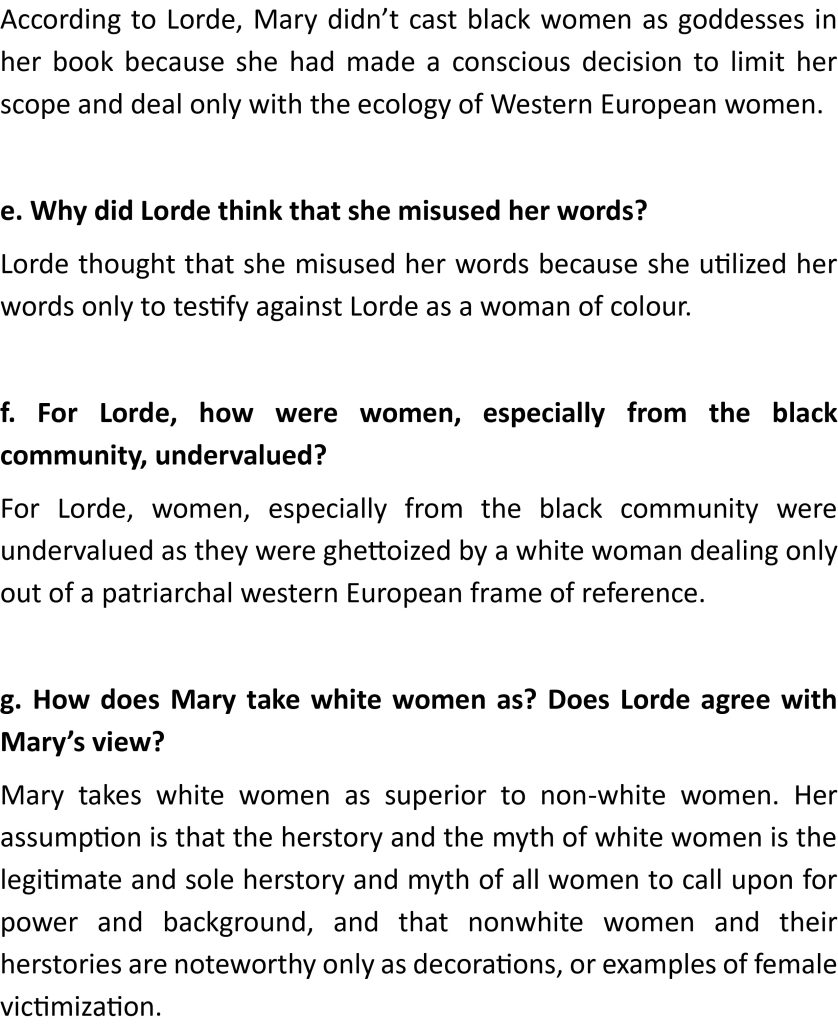
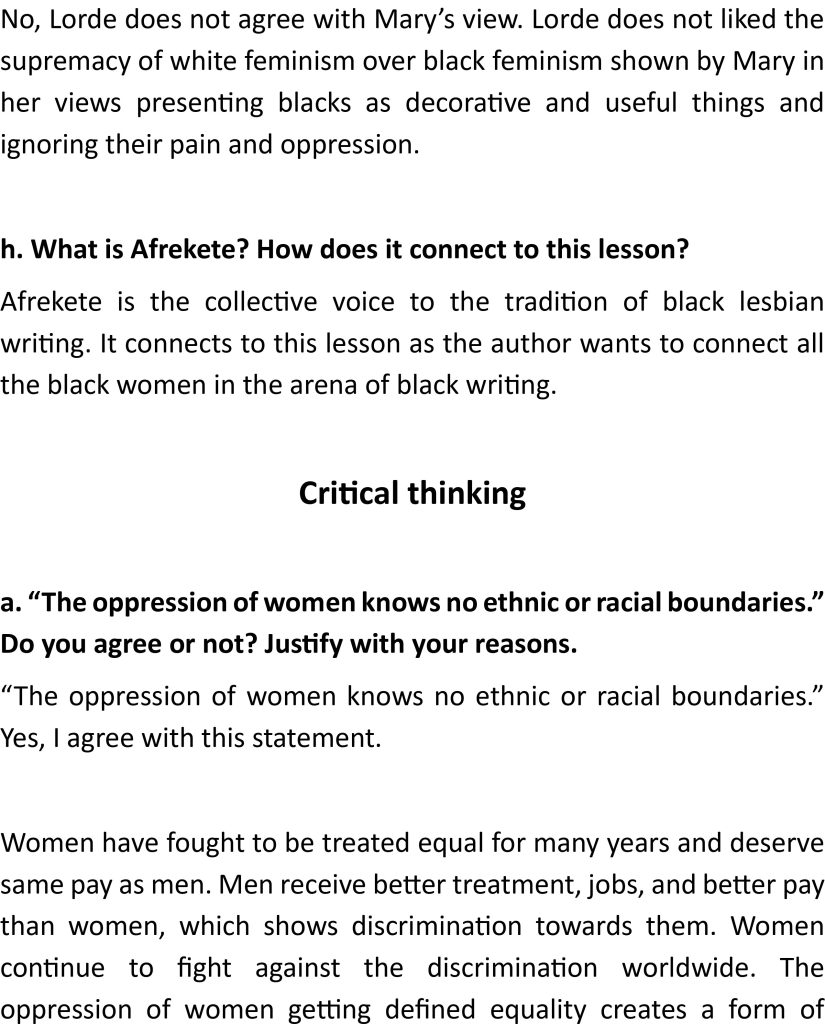
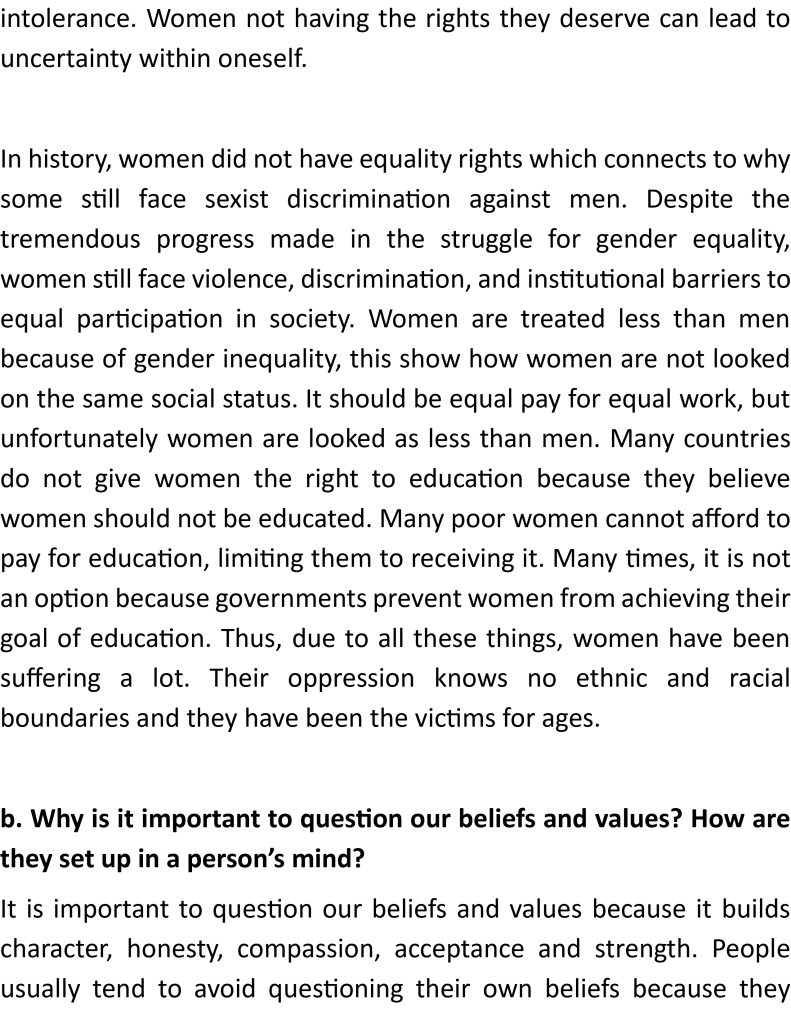
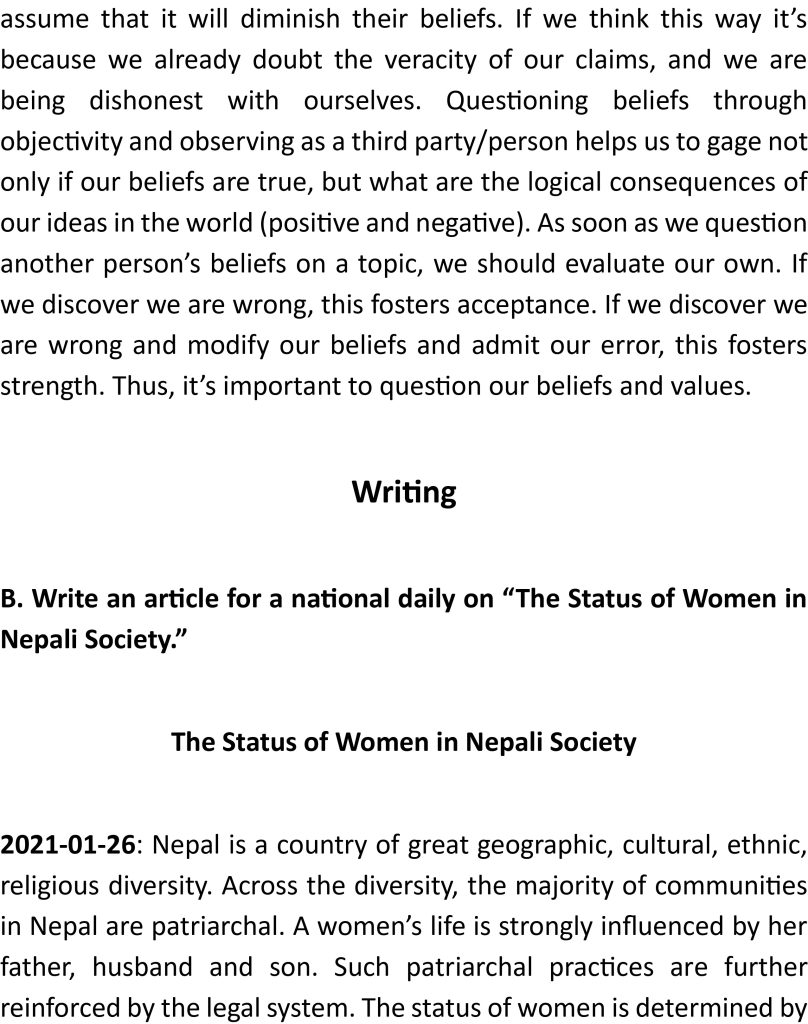
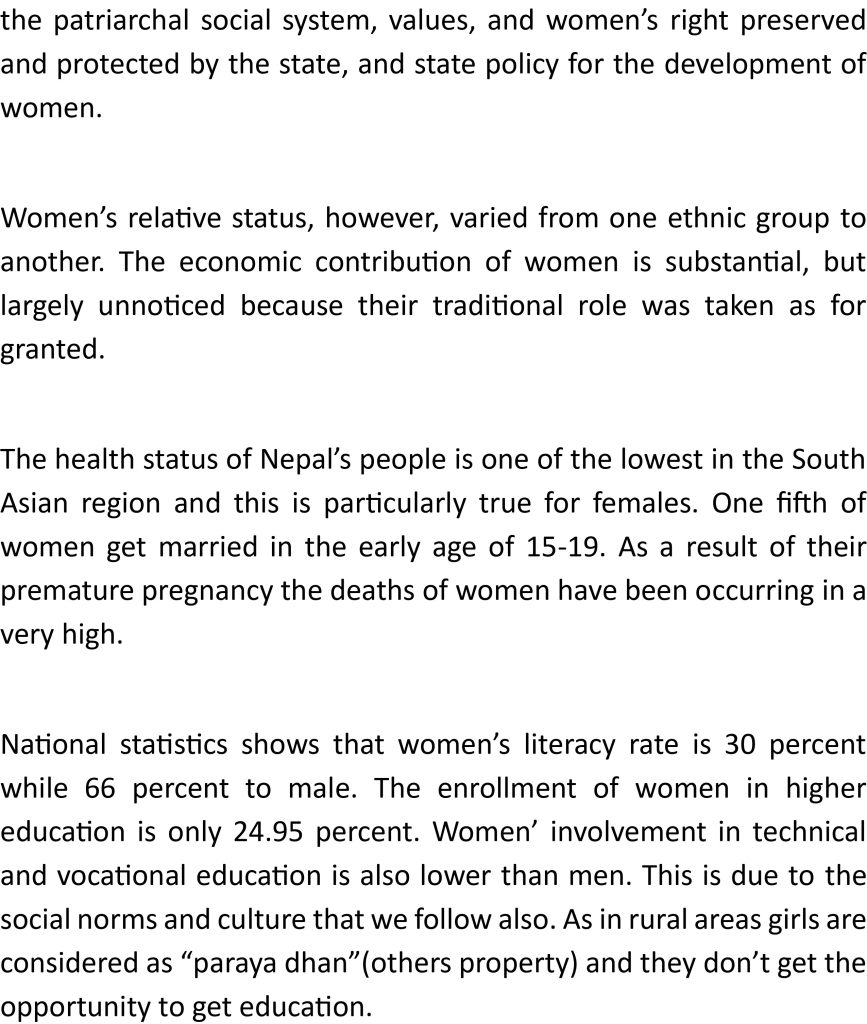
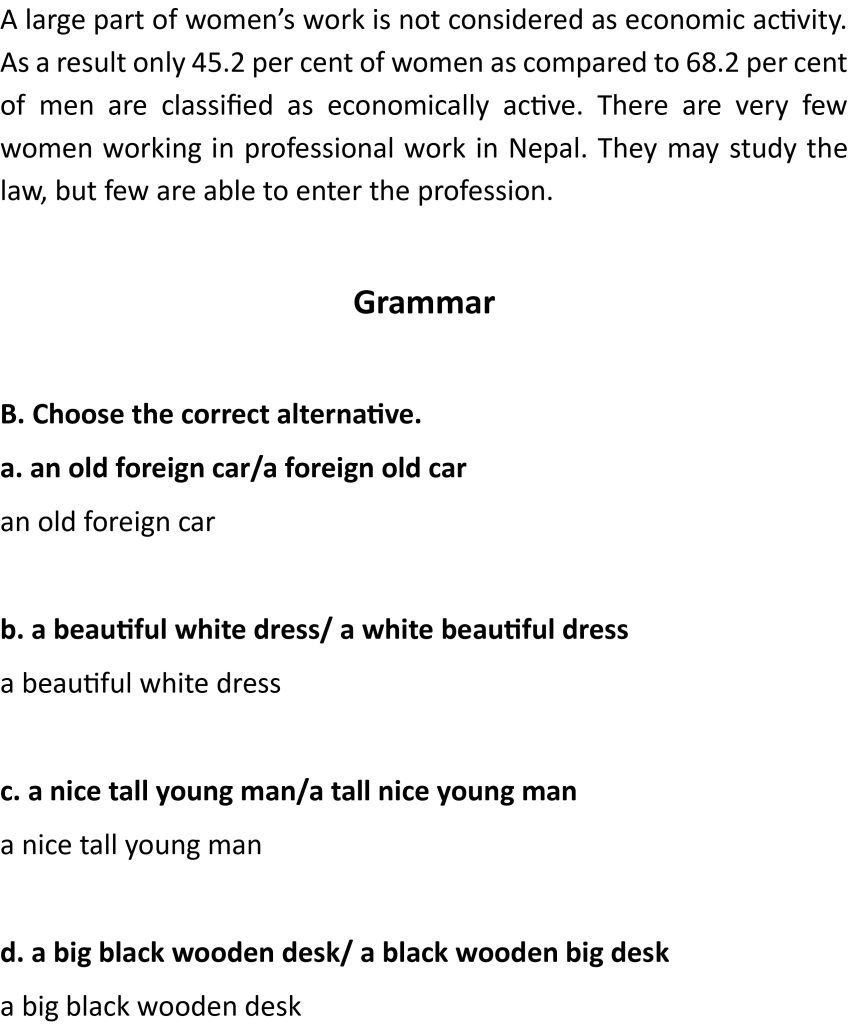
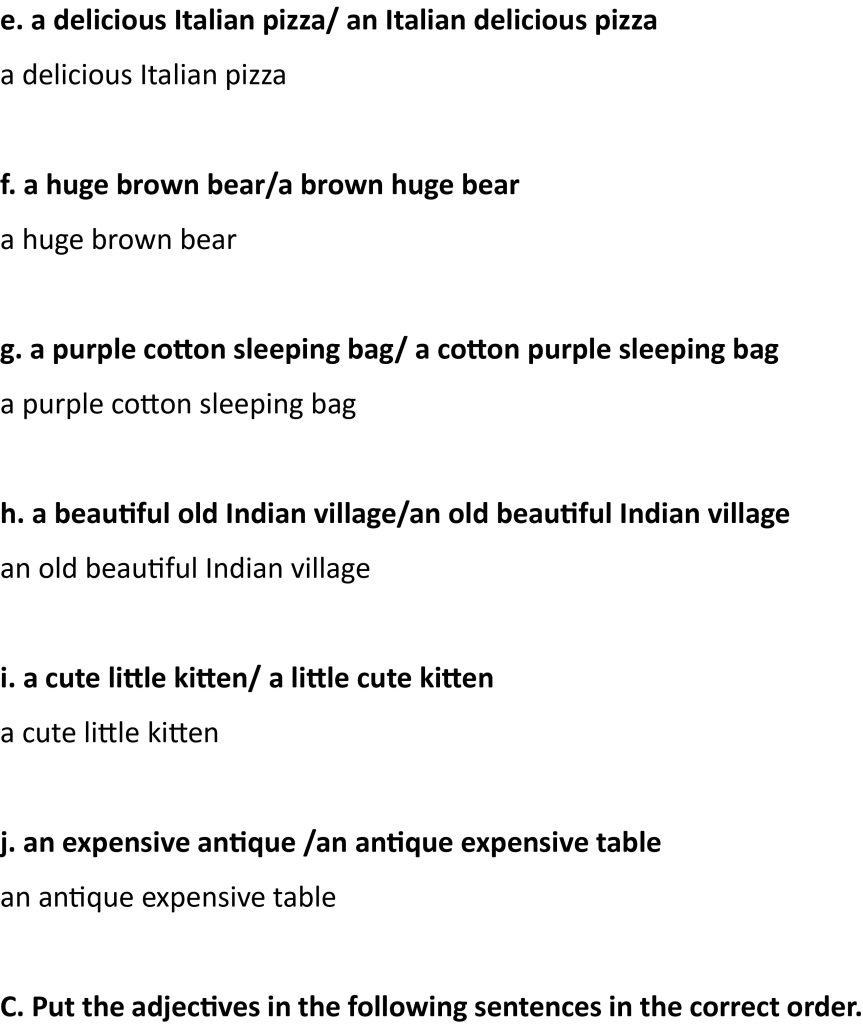
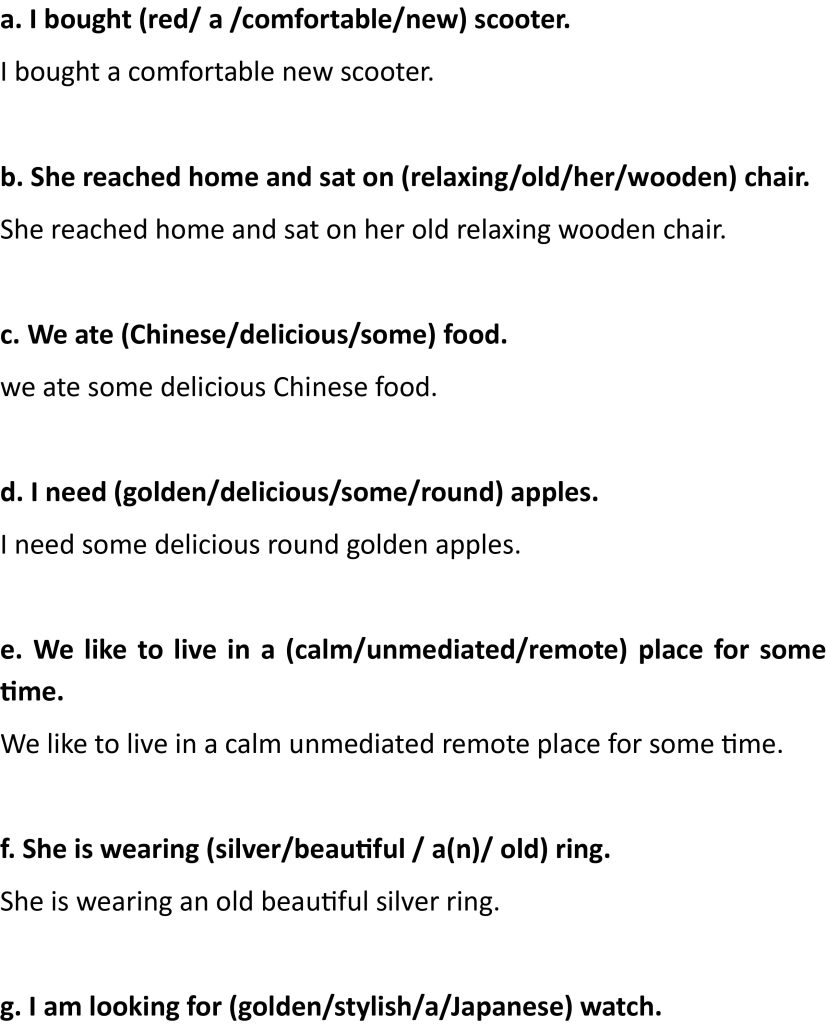
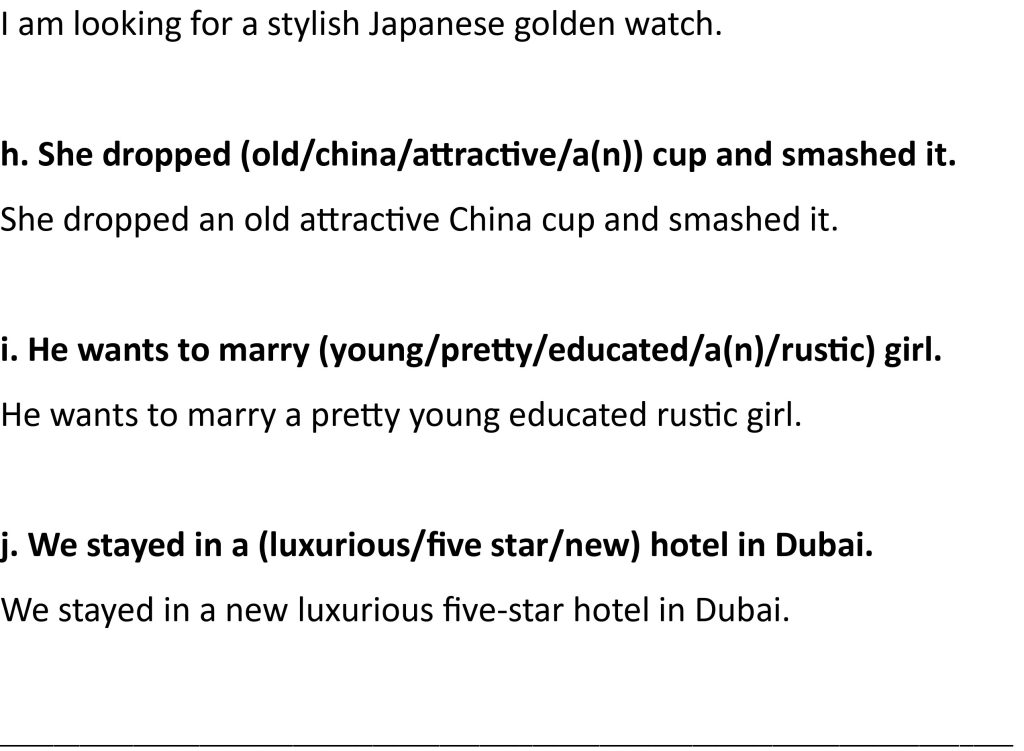
Summary of ‘Power And Politics Exercises’
“Power and Politics” is a compelling excerpt by Audre Lorde, reflecting on the intersection of race, gender, and feminist identity. Through her correspondence with Mary Daly, Lorde critiques the exclusion of Black women from mainstream feminist discourse. She underscores how white feminism often sidelines the voices and experiences of women of color, thereby reinforcing systemic oppression. Lorde argues that true solidarity among women must acknowledge racial differences and include the histories and struggles of marginalized groups.
Key Takeaways of ‘Power And Politics Exercises’
- Intersectionality: Lorde emphasizes how race and gender intersect, making the experiences of Black women distinct from those of white women.
- Critique of White Feminism: The author criticizes Mary Daly’s exclusion of Black women from her feminist narrative.
- Power in Expression: Lorde values the power of words, community, and shared struggle among women.
- Need for Inclusive Feminism: Real progress in women’s rights requires inclusive approaches that recognize racial and cultural diversity.
- Historical Erasure: The text highlights the erasure of Black herstories in feminist literature.
- Literary Activism: Lorde uses her writing as a form of activism to voice the struggles of Black women.
- Personal Reflection: The essay blends personal experience with political thought, showing the emotional cost of exclusion.
- Critique of Silence: Silence among oppressed groups is portrayed as dangerous and complicit.
- Collective Voice: Afrekete symbolizes the collective voice of Black lesbians and a step toward reclaiming identity.
- Relevance Today: The themes remain relevant in contemporary discussions on diversity within social justice movements.
FAQ:
What is the central theme of the chapter “Power and Politics” in Class 12 English?
The central theme is the intersection of race and gender in feminist discourse, especially the exclusion of Black women’s voices in mainstream feminism.
Who wrote “Power and Politics” and why is it significant in Class 12 English?
Audre Lorde wrote the piece; it’s significant for highlighting issues of racial and gender-based oppression and promoting inclusive feminism.
What does Lorde criticize about Mary Daly’s work in this chapter?
Lorde criticizes Daly for omitting Black women from her feminist book and ignoring their lived experiences.
What does the term ‘Afrekete’ represent in the context of this chapter?
Afrekete represents the collective voice and identity of Black lesbian writers and symbolizes empowerment and connection.
How does the chapter reflect power dynamics within feminism?
It shows how white women often dominate feminist discourse, marginalizing women of color and reinforcing existing power structures.
How is the title “Power and Politics” relevant to the content of this Class 12 English chapter?
The title reflects how both institutional and interpersonal power affect feminist politics, especially through exclusion and silencing.
What is Lorde’s message about silence and communication?
Lorde warns that silence about oppression empowers the oppressors and stresses the need for open, inclusive dialogue.
What literary devices does Audre Lorde use in “Power and Politics”?
She uses direct address, personal narrative, repetition, and rhetorical questions to emphasize her points and connect with readers.
How can students relate the message of this chapter to modern society?
Students can relate it to ongoing issues like racial injustice, gender inequality, and the need for intersectional activism today.
What is the educational value of “Power and Politics” in the Class 12 English curriculum?
It fosters critical thinking about social justice, diversity, and equity, encouraging students to challenge systemic inequality.
Leave a Reply